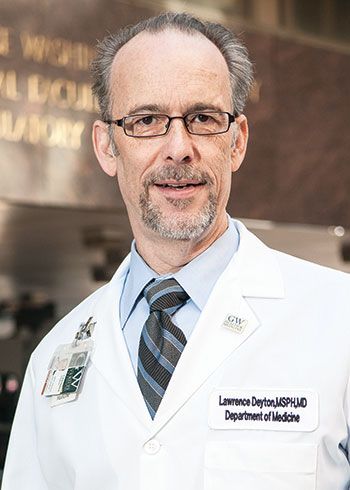
WASHINGTON (May 3, 2013) – The full implementation of traditional public health control strategies and integration of new regulatory authorities has the potential to significantly reduce tobacco-related deaths in the U.S., according to experts at the George Washington University (GW) School of Medicine and Health Sciences (SMHS) and the Center for Tobacco Products (CTP) at the Food and Drug Administration (FDA).
In a paper published by The Lancet as part of a series of papers on tobacco control, authors Lawrence “Bopper” Deyton, M.D., clinical professor of medicine at GW SMHS and professor of health policy at the GW School of Public Health and Health Services, and Corinne Husten, M.D., senior medical advisor at the CTP, outline how the FDA currently regulates tobacco use.
While the U.S. has a rich history of employing public health efforts to reduce morbidity and mortality from tobacco use, progress in decreasing the prevalence of tobacco use has slowed. Funding for many traditionally effective public health interventions has been cut and implementation of these programs has become increasingly challenging. However, with the enactment of the Family Smoking Prevention and Tobacco Control Act (Tobacco Control Act) in June 2009, the FDA, for the first time, has broad authority to protect public health by regulation of the manufacturing, marketing, and distribution of tobacco products in the U.S.
“Now that the FDA has authority to regulate tobacco products to protect public health, new tools exist to decrease the morbidity and mortality caused by tobacco use,” said Deyton. “The medical and public health communities need to fully understand the FDA’s new roles and, in addition to supporting traditional public health approaches to tobacco control, scientists and clinicians must become active participants in the FDA’s regulatory processes to assure their data and perspectives are integrated in the FDA’s regulatory work.”
The authors elaborate on the FDA’s six major areas of regulatory authority to protect and improve public health: Regulation of tobacco product manufacturing; regulation of the advertising, marketing, and promotion of tobacco products; regulation of the distribution and sales of tobacco products; enforcement of the provisions of the Tobacco Control Act and tobacco regulations; regulatory science to support FDA authorities and activities; and public education about the harms of tobacco products and to support FDA regulatory actions.
In their paper, Deyton and Husten conclude that “tobacco product regulation has the potential to be a game-changer for tobacco prevention and control. However, regulation of tobacco products in isolation cannot solve the public health problem caused by tobacco use. It is only with the full implementation of both traditional public health strategies and the new regulatory authorities that we will ensure that tobacco-related morbidity and mortality is part of the USA’s past, not its future.”
For the series paper 1, titled “Understanding the Tobacco Control Act: Efforts by the US Food and Drug Administration to Make Tobacco-related Morbidity and Mortality Part of the USA’s Past, not Its Future,” visit The Lancet.


